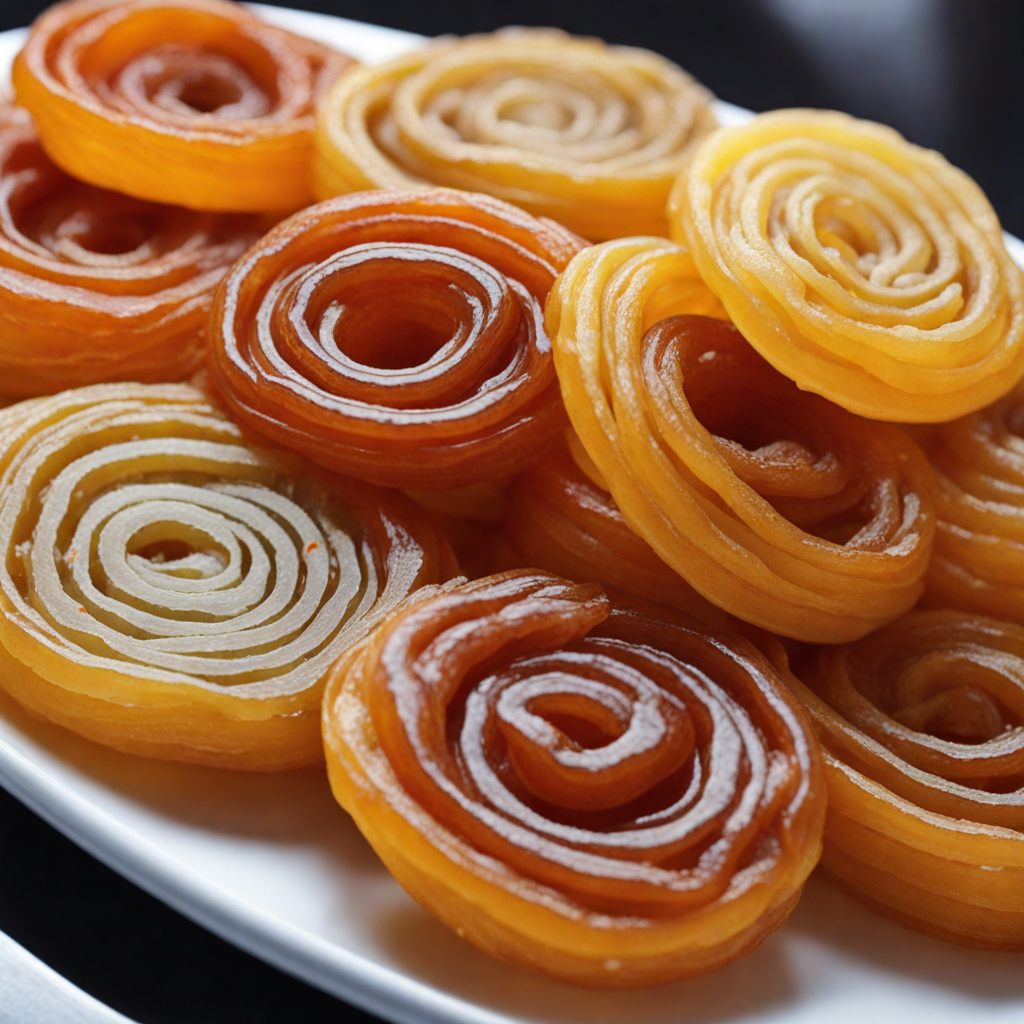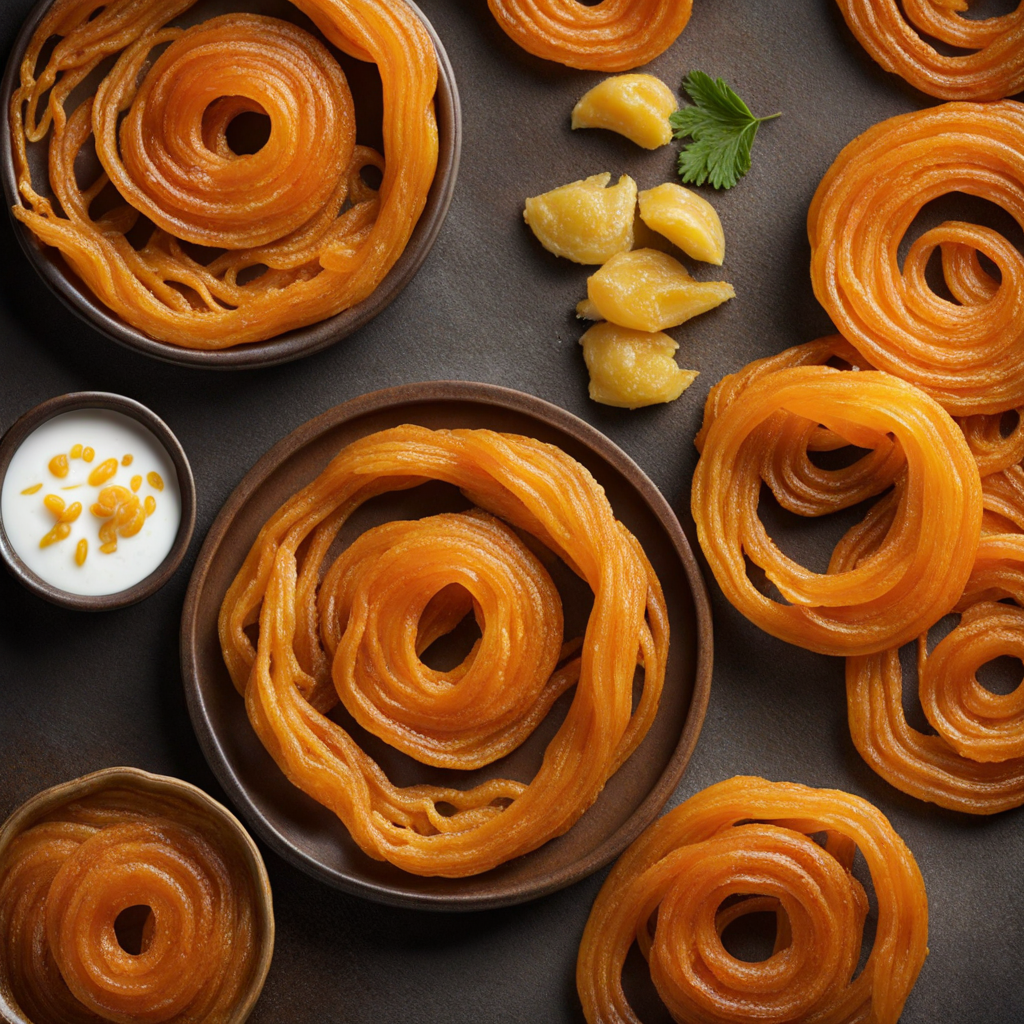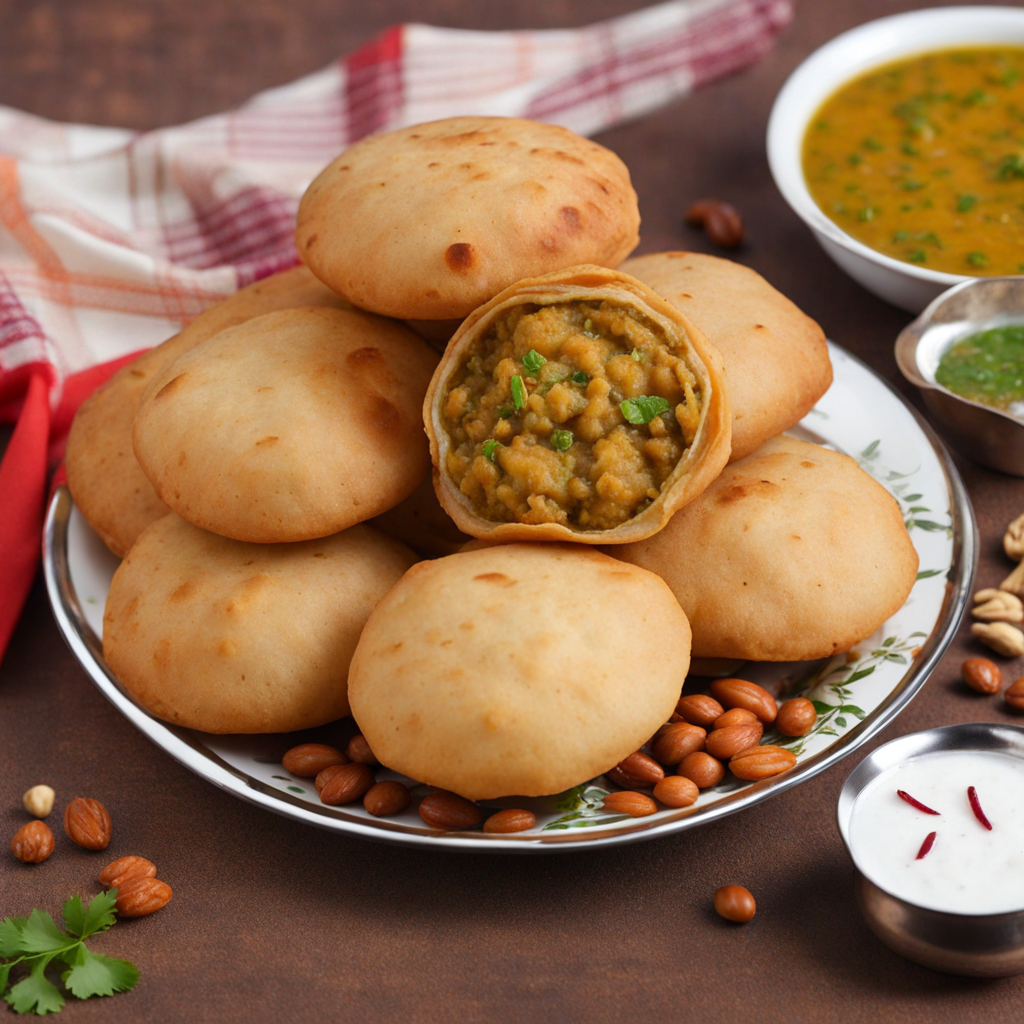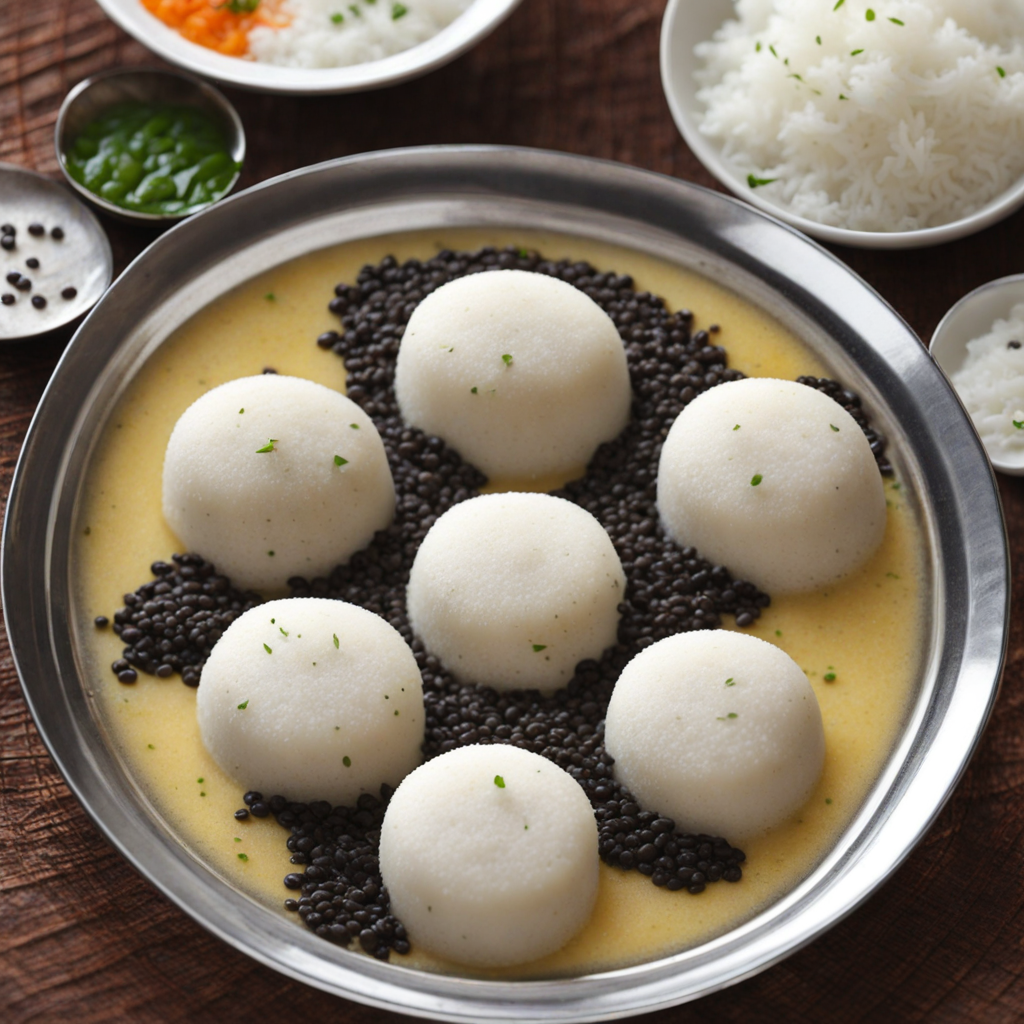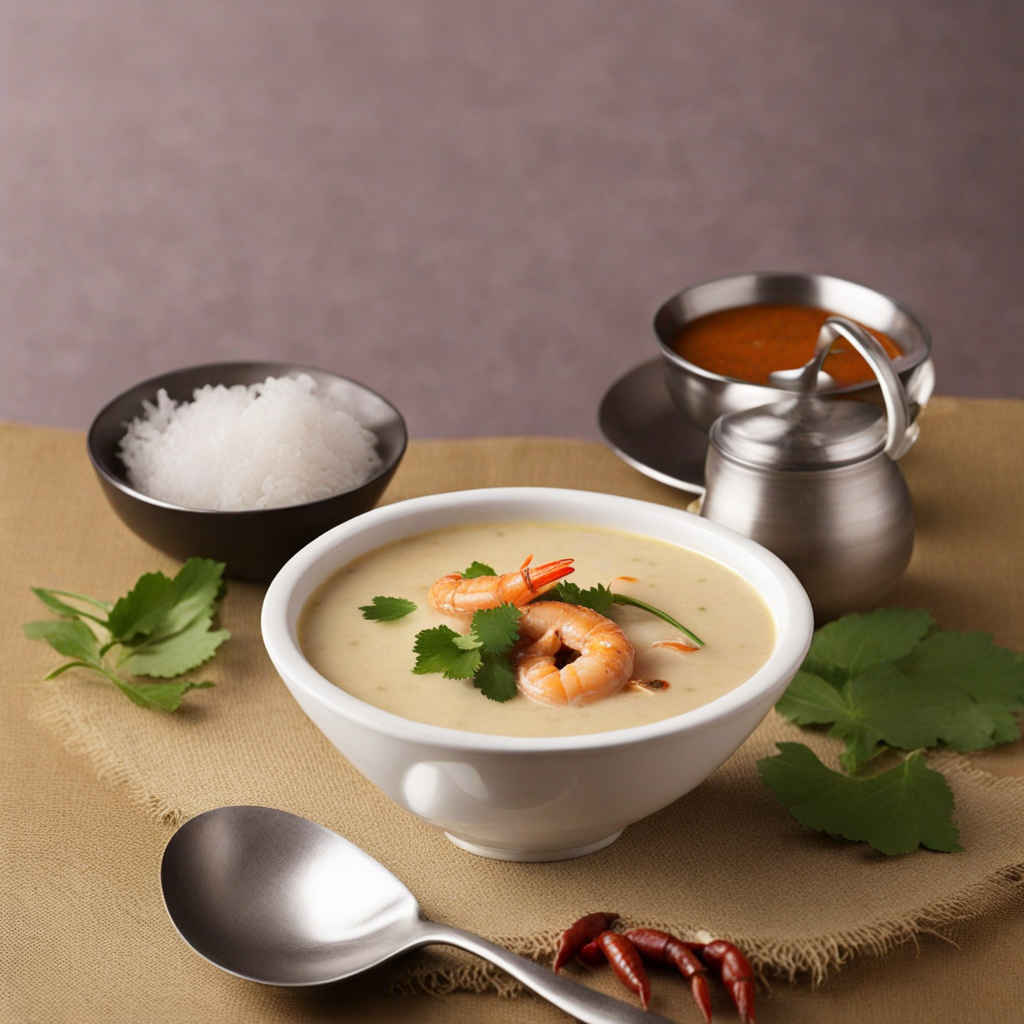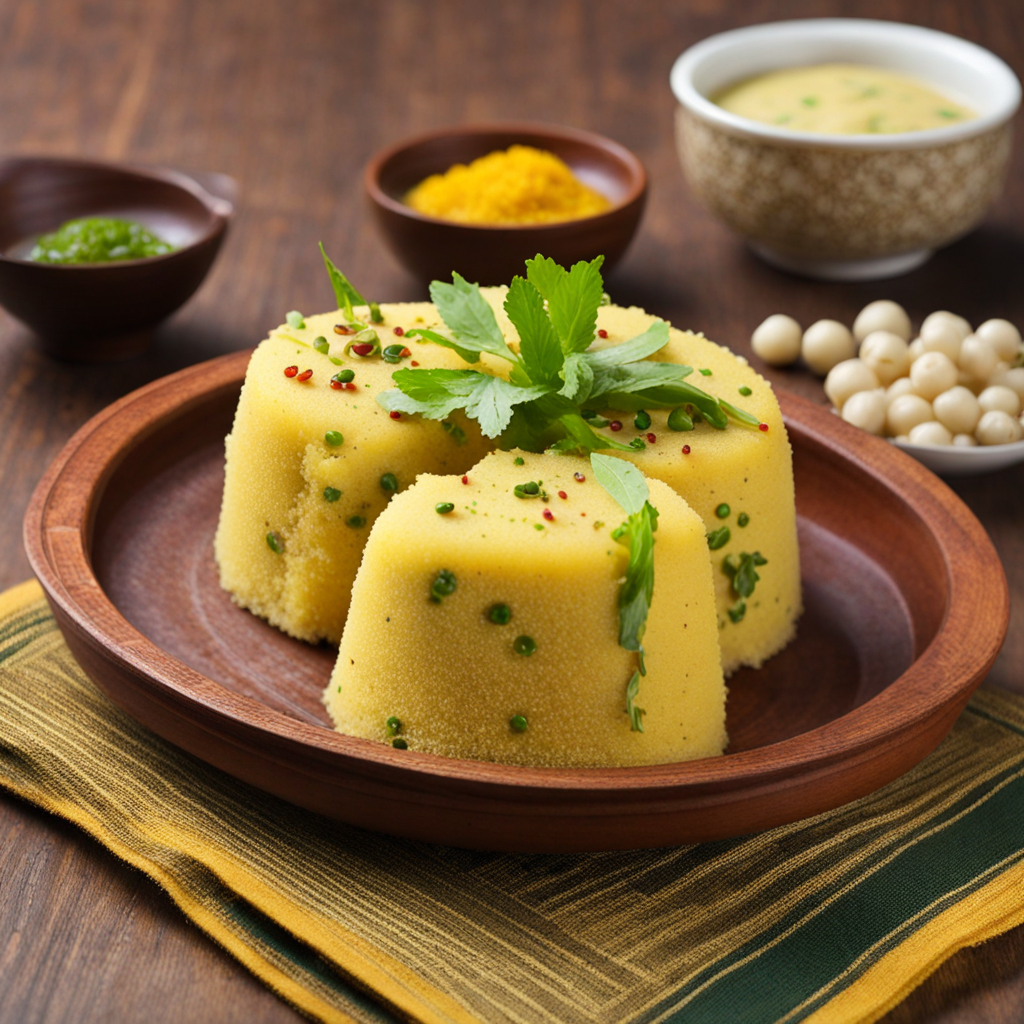Jalebi
Jalebi is a beloved Indian sweet that has captivated taste buds across the subcontinent for centuries. Its origins can be traced back to ancient times, with historical accounts suggesting that it may have roots in Persian and Arab cuisines. The name "jalebi" itself is derived from the Arabic word 'zalabia,' which refers to a similar fried confection. Over the years, the sweet has evolved and adapted, becoming a quintessential part of Indian festivities, celebrations, and everyday life. Jalebi is particularly popular during festivals, weddings, and special occasions, often served as a dessert or a snack. The flavor of jalebi is a delightful blend of sweetness and tanginess, with a unique texture that sets it apart from other sweets. When freshly made, jalebi is crispy on the outside while being soft and syrupy on the inside. The sweetness comes from the sugar syrup in which the fried spirals are soaked, while a hint of sourness is often introduced through the addition of a few drops of lemon juice or yogurt in the syrup. This combination creates a vibrant flavor profile, making jalebi not just a treat for the palate but also a sensory experience that delights the senses. Preparation of jalebi is an art that requires skill and precision. The process begins with creating a batter made from refined flour (maida) and water, often with the addition of a pinch of turmeric or food coloring for that signature golden hue. Some recipes incorporate a small amount of besan (gram flour) to enhance
How It Became This Dish
The delightful sweet known as जलेबी (Jalebi) has a captivating history that traces back to ancient times, primarily in the Indian subcontinent. The origins of Jalebi can be linked to the Middle Eastern regions, particularly the Persian and Arabic culinary traditions. The earliest references to a similar sweet dish appear in Arabic and Persian literature, where it is known as "Zalabia." This dish was made from fermented batter, which was deep-fried and soaked in syrup, much like the Jalebi we know today. As the Islamic empires expanded into India, they brought with them their culinary influences. The Mughal Empire, which ruled large parts of India from the 16th to the 19th century, played a significant role in shaping Indian cuisine. It is believed that the term "Jalebi" is derived from the Arabic word "Jalabia," referring to the round, spiraled shape of the sweet. The process of making Jalebi, which involves swirling the batter into intricate shapes before frying and soaking it in sugar syrup, likely evolved during this period, merging local ingredients and techniques with those brought by Persian and Arab traders and settlers. The preparation of Jalebi is an art form in itself. Traditionally, it is made from a fermented batter of all-purpose flour (maida) mixed with yogurt or a pinch of baking soda, which gives it a distinct tangy flavor. The batter is then poured into a muslin cloth or a piping bag, allowing the cook to create the iconic spiral shapes in hot oil. Once fried to a golden-brown hue, the Jalebi is immediately dipped in a warm sugar syrup flavored with cardamom, saffron, or rose water, enhancing its aroma and taste. This method of preparation, passed down through generations, is a testament to the culinary expertise and creativity present in Indian kitchens. Jalebi holds a special place in Indian culture and is often associated with celebrations and festivals. It is a staple at weddings, religious ceremonies, and festive occasions like Diwali and Eid. The sweet is not only a dessert but also a symbol of hospitality, love, and joy. In many regions, it is common to find vendors selling fresh Jalebi at street corners, where the sizzling sound of the batter hitting hot oil is an irresistible invitation for passersby. In addition to its cultural significance, Jalebi also plays a role in various regional culinary practices. In North India, it is often paired with a savory dish called "samosa" or served alongside "rabri" (a sweet, thickened milk dessert). In South India, a slightly different version known as "Imarti" is made, which uses urad dal (black gram) instead of flour, showcasing the adaptability of the dish across different regions and communities. As time progressed, Jalebi continued to evolve. In the 20th century, during the British colonial rule, the sweet began to gain recognition beyond local boundaries. Indian sweets, including Jalebi, made their way to the British palate, and it was during this time that the dish started to be featured at tea parties and social gatherings in colonial households. This not only solidified Jalebi's place in Indian cuisine but also introduced it to international audiences. With the advent of modern technology and globalization, Jalebi has been embraced in various forms around the world. The dish has traveled far and wide, with variations appearing in countries like Nepal, Bangladesh, and even as far as the Caribbean, where it has been adapted to local tastes. For instance, in Nepal, Jalebi is often thicker and less crispy compared to the traditional Indian version. Similarly, in Bangladesh, it is known as "Jalebi" as well, but is sometimes served with a side of yogurt or milk, altering the way it is consumed. In contemporary India, Jalebi has seen a resurgence in popularity, particularly among the younger generations who appreciate both its nostalgic value and its unique flavor. Innovative chefs have begun experimenting with the traditional recipe, incorporating ingredients like chocolate or fruit-flavored syrups, thereby modernizing the classic dish while paying homage to its rich heritage. Despite these modern adaptations, the essence of Jalebi remains unchanged. It continues to evoke memories of childhood and family gatherings, bridging the gap between generations. The sight of a vendor skillfully swirling the batter into a perfect spiral, the aroma of warm sugar syrup, and the first bite of the crispy, sweet treat remain deeply embedded in the collective consciousness of those who have grown up in India. Jalebi’s cultural significance extends beyond just its taste; it represents the rich tapestry of Indian culinary history. The sweet embodies the fusion of different cultures, ingredients, and techniques that have shaped Indian cuisine over centuries. It serves as a reminder of the historical exchanges between regions and peoples, highlighting how food can transcend borders and bring people together. In conclusion, Jalebi is much more than just a sweet; it is a celebration of culture, tradition, and history. Its journey from ancient Persia to the bustling streets of India showcases the adaptability and resilience of culinary practices over time. As Jalebi continues to be enjoyed by millions, it remains a cherished symbol of festivity and joy, ensuring its place in the hearts and palates of those who savor its delightful sweetness.
You may like
Discover local flavors from India


